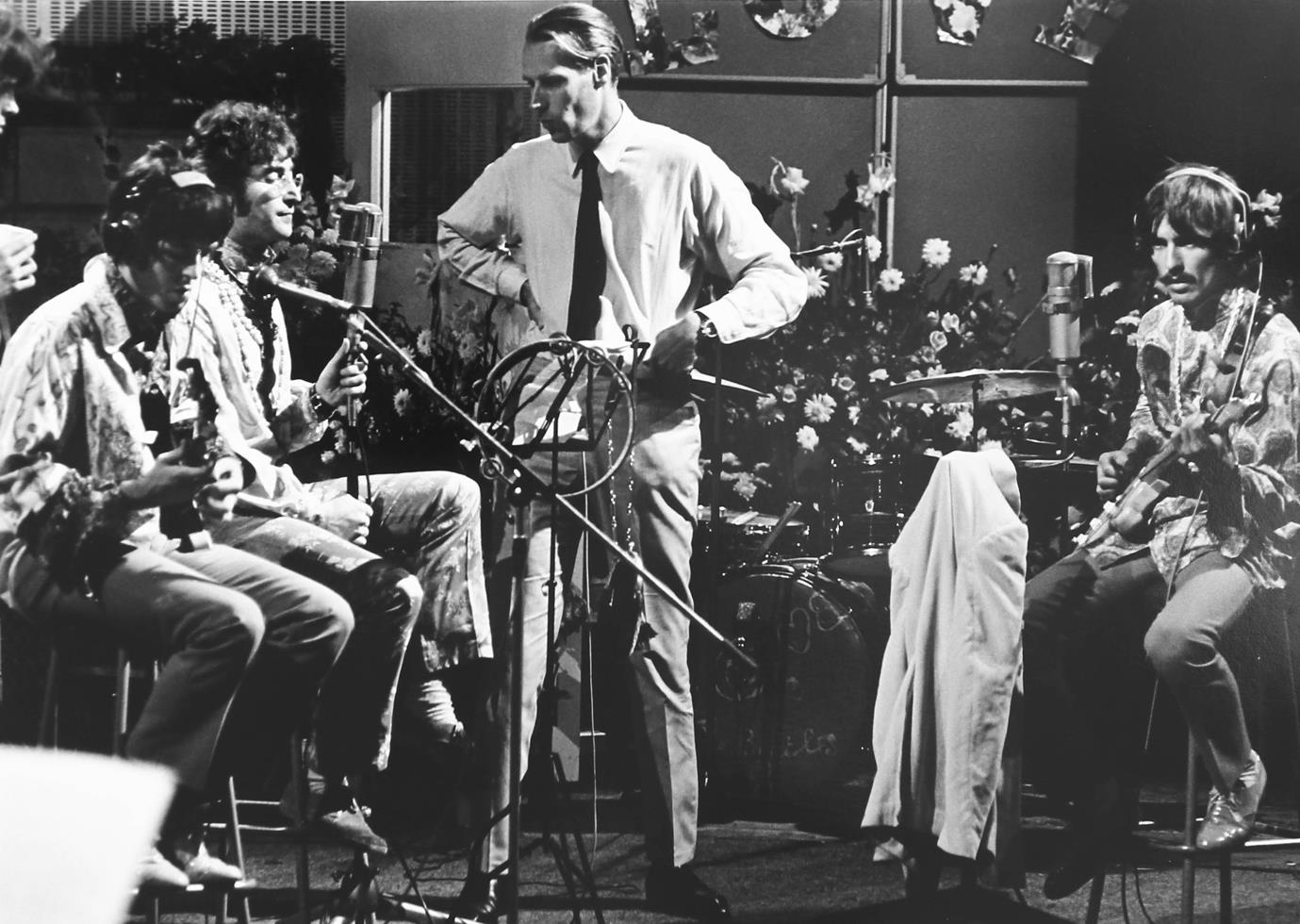
"We would say, 'Try it. Just try it for us. If it sounds crappy, OK, we'll lose it. But it might just sound good.' We were always pushing ahead: Louder, further, longer, more, different."
—Sir Paul McCartney
Guitar Feedback
- 1964 - "I Feel Fine" was recorded, beginning with a feedback note caused by the A-string of McCartney's bass guitar and accompanied by the sympathetic resonance of Lennon's semi-acoustic guitar. This was the first use of intentional feedback in a rock record.
Close miking
- 1966 - "Eleanor Rigby" was recorded using a double-string quartet. Due to McCartney wanting to avoid the lush, smooth string sound typical of a Mancini film score, the microphones were placed so closed to the instruments it made the string players uncomfortable. This began a trend of close miking all acoustic instruments, from Ringo Starr's drum kit to brass instruments.
Artificial double tracking
- 1966 - While recording Revolver,Lennon complained about having to record his vocal part twice to create a double-tracked effect. By playing the recorded part through two tape machines simultaneously and manipulating the tape speed of one of the machines, engineer Ken Townsend was able to artificially recreate the sound of having double tracked the vocals. In the digital age, this is done using delay effects and is considered common practice.
Sampling
- 1966 - The brass band solo in "Yellow Submarine" was made from a recording of a Sousa march. George Martin and Geoff Emerick cut the tape it was recorded on into small pieces and re-arranged them to create the part heard on the record.
- 1967 - On "Being for the Benefit Mr. Kite," multiple recordings of steam organ pieces were used to create a circus-like atmosphere. They cut the tape samples into short lengths, threw them in the air, and spliced them together in the order they picked them up.
- 1967 - A BBC broadcast of King Lear was mixed into "I Am the Walrus."
Backwards tapes
- "I'm Only Sleeping" features a guitar solo that is played backward. George Harrison wrote a solo and learned how to play it backward so the notes would be in the proper order when the tape was played backward.
- "Strawberry Fields Forever" features reversed cymbals.